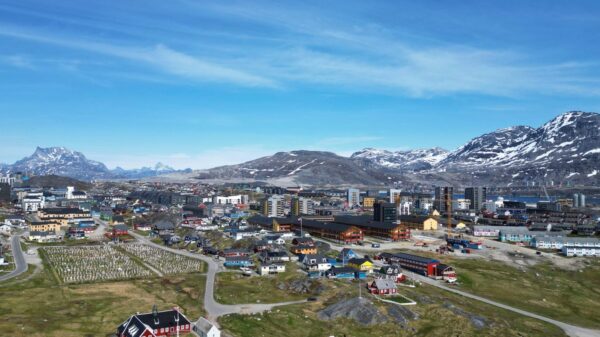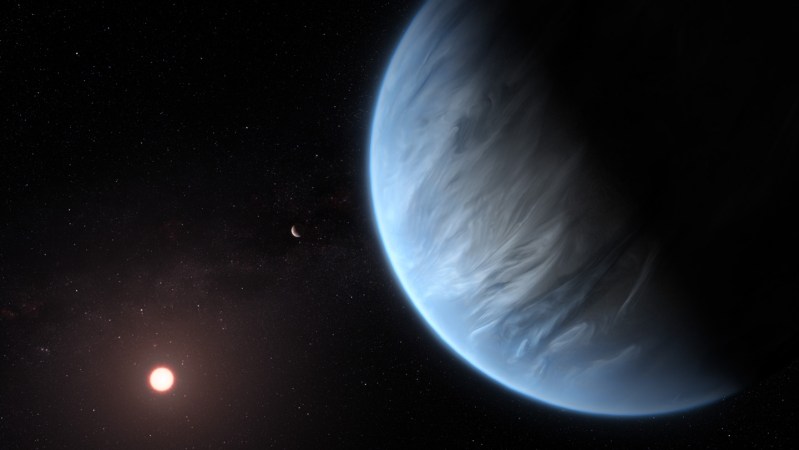Research has unveiled that some planets might be able to produce their own water, rather than relying on external sources. In groundbreaking laboratory experiments, scientists simulated the extreme conditions present on certain exoplanets by bombarding olivine, a mineral found abundantly in planetary interiors, with high-energy lasers in the presence of hydrogen gas. This process strips the minerals of their oxygen atoms, allowing them to react with hydrogen to form water. The findings were detailed in a study published on October 29, 2023, in the journal Nature.
The discovery could explain the presence of water-rich exoplanets that orbit closely to their host stars, according to the researchers. Furthermore, it may provide insights into the origins of water on Earth, adding a significant piece to a long-standing enigma. Hundreds of exoplanets have been identified with sizes and masses between Earth and Neptune, many situated much closer to their stars than Earth is to the Sun. Their estimated densities indicate they likely have rocky interiors enveloped by thick layers of water or hydrogen. Despite these findings, the mechanisms behind their water-rich atmospheres have remained unclear.
In our solar system, a distinct division exists between planets formed inside the “snow line,” where water is scarce due to solar heat, and those formed outside it, such as Saturn and Neptune, which are rich in water and gases. Traditionally, astrophysicists had theorized that watery exoplanets form in distant orbits before migrating inward. The recent study challenges this notion by suggesting that under suitable conditions, chemical reactions between hydrogen and minerals can generate water locally.
Recreating these conditions in a laboratory setting has proven challenging. Researchers utilized a diamond anvil cell to subject samples to the necessary temperature and pressure. However, the intense heat from hydrogen molecules can infiltrate the carbon lattice of the diamonds, leading to breakage. To mitigate this issue, the team applied pulsed lasers, which heated the samples in short bursts rather than continuously. Harrison Horn, a planetary scientist at the Lawrence Livermore National Laboratory in California, remarked, “I still broke a lot of diamonds” during the process.
When the experiments finally succeeded, researchers were astonished by the volume of water produced. “There was no rock left. All I had was metal and water,” Horn stated. Dan Shim, a geophysicist at Arizona State University in Tempe, noted that the amount of water generated was “thousands of times more than expected for the Earth” if it had a thick layer of hydrogen atmosphere. Approximately 18 percent of the initial mass converted into water during the experiments.
Researchers believe this water-generating process may occur at the boundary between a planet’s rocky core and its gaseous hydrogen envelope, where high pressure and temperature can facilitate the reaction. They estimate that the final water content of these planets could range from 5 percent to 28 percent of the planet’s mass. The resultant worlds could either be massive oceanic planets—two to five times the size of Earth—covered by deep oceans or “hycean” worlds, characterized by oceans topped with dense hydrogen atmospheres.
These findings imply that such worlds exist on a continuum rather than as distinct types. “They are related, like cousins, or like parents and sons and daughters,” Shim explained. The eventual classification of a planet as an ocean world or a hycean world likely depends on variables such as its distance from its star, size, and initial composition.
This study significantly contributes to discussions regarding the habitability of hycean worlds. Recent research has indicated that much of the water on these planets could remain trapped in the mantle, resulting in dry surfaces. However, this new research “moves the water abundance back up,” according to Remo Burn, an astrophysicist at the Observatoire de la Côte d’Azur in Nice, France, who was not involved in the study. “It’s maybe good news for life on those planets.”
The implications of these results also extend to Earth. Although the high-pressure and high-temperature conditions necessary for this chemical reaction do not currently exist on Earth, they may have been present during its early formation. An early Earth with a thick, hydrogen-rich atmosphere could have initiated similar water-forming reactions. Evidence supporting this theory comes from tiny water vesicles trapped in ancient diamonds, which display a distinct chemical signature when compared to surface water. This indicates the possibility of two different reservoirs for Earth’s water: a primordial one acquired through early chemical reactions and a later influx from water-rich comets and asteroids from the outer solar system.






































































